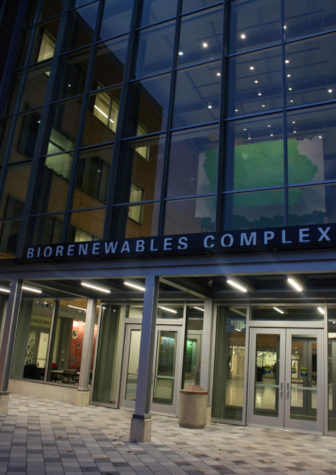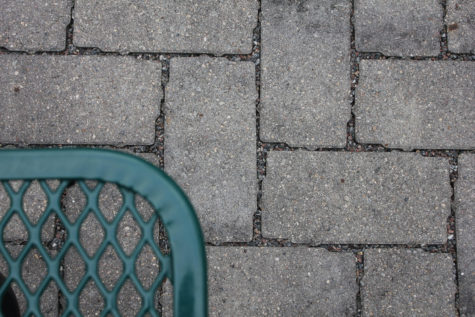A solution to rare earth elements
January 13, 2015
Researchers at the Ames Laboratory are developing new ways to obtain rare earth elements.
Rare earth elements are used to make light bulbs and electronics like cell phones and computers. Most rare earth elements come from China, but China has begun to cut back on its exports, causing U.S. officials to become concerned about the amount of elements the U.S. has available to make products. The Critical Materials Institute has been assigned the task of developing new ways of obtaining these elements.
“There’s really only three different things you can do on a technical basis [to obtain the rare earth elements],” said Alex King, director of the institute.
- Find more sources.
- Find alternative materials.
- Find ways to recycle rare earth elements.
“There are plenty of places around the world where there are mineable deposits of rare Earth elements, the trouble is that it costs about one billion dollars to start a mine,” King said.
What the CMI is trying to do is find ways to bring these costs down. Bringing the costs down will lead to more mines being opened up around the world, and more rare Earth elements becoming available.
One place to find more rare earth elements is in tailing heaps. Tailing heaps are big piles of deposited rock from mines that can contain the elements that are being mined. A good mine, King said, will extract 50-60 percent of the elements from the mine, the other 40-50 percent will end up in the tailing heaps. Rocks in these tailing heaps require more advanced equipment to extract the elements.
“There are some challenges with the fact that the rocks could contain some elements that you really don’t want to mess with, like thorium because it is radioactive. When you start extracting the rare earths from [the rock] you have to find something to do with the thorium,” King said.
Another place that rare earth elements can be obtained is in phosphates dug up for fertilizers. Because the amount is so small no one has really tapped into this source yet, said Thomas Lograsso, Finding Substitutes Focus Area Leader for the CMI.
“It is in minute quantities, so one has to think what is the economic value of trying to go after that,” Lograsso said.
The CMI is also trying to find alternative materials to replace the rare Earth elements in electronics.
Neodymium and Dysprosium are elements used to make high-powered magnets used in electronics. The CMI has not currently found any replacements for these elements, but they do still have a few ideas that might work. Where they have had the most success is finding replacements for Europium and Ytterbium, elements used in fluorescent lights.
“We are actually on a very good track toward developing phosphors, the white coating on the inside of a fluorescent tube that gives off the white light,” King said. “We have a red phosphor and a green phosphor that are rare earth-free or very nearly rare earth-free.”
It takes an average of 18 years for a substitute to be deployed, Lograsso said. The CMI only has at most ten years to deploy substitutes.
Recycling rare Earth elements is possible, but it is very time consuming, King said.
“[Recycling] is a nice idea in principle. The challenge is, it is more expensive than mining,” King said.
To recycle elements from a cell phone is very labor-intensive. Cell phones are not meant to be opened up, King said. There are multiple elements in cell phones — to recycle them they would need to be chemically detached from each other.
To make the recycling worthwhile, “tens of thousands of cell phones would have to be collected. It is much easier to go to a place where there are rare earths in the ground and just dig them up because it is all in one place,” King said.
The Department of Defense has one of the highest recycling rates in the world, King said.
Mining also causes some environmental hazards. Most mines use a lot of acid and water that can damage the environment.
“One of the things that you have to do is develop processes that recycle all the chemicals you use to the maximum extent possible, recycle all the water you use and do as little environmental damage as you can,” King said.
If mines are mined environmentally consciously, then they can actually be mined for less money. If the acid and water used in the mines are recycled, then they can be used in other mines. King says that it does cost some extra money to put in the facilities to recycle the acid and water, but over time they will begin to help save money.
Lograsso stresses that no one solution will work for every element.
“Not all great ideas end up in innovations, all innovations result from great ideas though,” Lograsso said.
The CMI received funding for five years ending on June 30, 2018. King believes that they are on the right track to make a difference in the obtaining of rare Earth elements.
“No problem is ever completely solved, but we will have made a big difference in a few different areas. We will have invented a few things that will make mining more cost efficient and we will have invented some substitute materials,” King said.
The CMI is headquartered in The Ames Laboratory, but there are people working with them at the Idaho National Lab, the Oak Ridge National Lab and the Lawrence Livermore National Lab. Along with the Labs the CMI is partnered with seven universities:
- Iowa State University
- Colorado School of Mines
- Purdue University
- Brown University
- Florida Polytechnic University
- Rutgers University
- University of California, Davis
The CMI is also partnered closely with Molycorp and General Electric.









